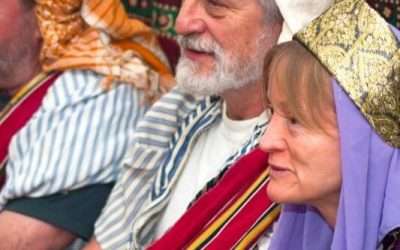Depth, Diversity, and the Divine Promise (Part 1)
The Great Commission is a common phrase in most evangelical circles. Although, in a recent study by Barna research, when asked of churchgoers, “Have you heard of the Great Commission?” 51 % said no. 25% said yes, but “I can’t recall the exact meaning”.
This is an alarming statistic, but we should have known this. The fruit of this statistic has been playing out in the decline of Western Christianity for decades.
When asked about the content of the Great Commission, most people will reference Matthew 28 19-20, or quote a portion of it.
Matthew 28:19-20 (ESV)
19 Go therefore and make disciples of all nations, baptizing them in the name of the Father and of the Son and of the Holy Spirit,
20 teaching them to observe all that I have commanded you. And behold, I am with you always, to the end of the age.”
This is a great Great Commission passage. Although, this provides a narrowed focus on the task Jesus left us. To overcome the lack of knowledge of the Great Commission among churchgoers, church leaders need to expound on the diversity, depth, and divine promise in the Great Commission. (See pastor, I just alliterated for you)
The purpose of this two-part series is to show you the diversity, depth, and divine promise of the Great Commission. In doing so, it will show that there are actually several Great Commission passages that Jesus said at different times. Each Great Commission passage also has a specific mandate and emphasis. Part one will list the passages with some contextual background. Part two will help the reader synthesize these passages to have a more robust view of the task and some practical next steps to be better equipped to fulfill the mandates of the Great Commission.
Here are five Great Commission passages listed in biblical order.
- Matthew 28:18-20
- Mark 16:15
- Luke 24:44-49
- John 20:21
- Acts 1:8
You may be familiar with these passages above. It’s a common assumption that each of the passages is really the same message recorded differently by each of the gospel writers. Although, these passages were actually all given at different times over the 40 days between Jesus’ resurrection and ascension. You will also discover that the biblical order of the gospels doesn’t provide the chronological order. The passages once viewed separately and in sequential chronological order offer some great insight into the task of the Great Commission.
Let’s look at the passages in chronological order and make some observations.
- John 20:21 (ESV)
Jesus said to them again, “Peace be with you. As the Father has sent me, even so I am sending you.”
Where was it spoken? – Jerusalem
When was it spoken? – Night of the resurrection (v19)
Who originally heard it? – 10 disciples (v24)
What was the mandate? – so I send you (v21)
What was the emphasis? – The Model (v21)
- Mark 16:15 (ESV)
And he said to them, “Go into all the world and proclaim the gospel to the whole
creation.
Where was it spoken? – Jerusalem
When was it spoken? – 8 days after the resurrection
Who originally heard it? – 11 disciples (v14)
What was the mandate? – Go into all the world… into all creation (v15)
What was the emphasis? – The Magnitude (v15)
- Matthew 28:19 (ESV)
Go therefore and make disciples of all nations, baptizing them in the name of the Father
and of the Son and of the Holy Spirit,
Where was it spoken? – Mountain in Galilee (v16)
When was it spoken? – Likely 11-14 days after the resurrection
Who originally heard it? – 11 disciples (v16)
What was the mandate? – Make disciples (v19)
What was the emphasis? – The Method (v19)
- Luke 24:46-48 (ESV)
and said to them, “Thus it is written, that the Christ should suffer and on the third day rise from the dead, and that repentance and forgiveness of sins should be proclaimed in his name to all nations, beginning from Jerusalem. You are witnesses of these things.
Where was it spoken? – Jerusalem (v33)
When was it spoken? – Day of the ascension (v50)
Who originally heard it? – 11 disciples (v33)
What was the mandate? – proclaim repentance and forgiveness of sins (v47)
What was the emphasis? – The message (v47)
- Acts 1:8 (ESV)
But you will receive power when the Holy Spirit has come upon you, and you will be my
witnesses in Jerusalem and in all Judea and Samaria, and to the end of the earth.”
Where was it spoken? – Mount of Olives (v12)
When was it spoken? – moments before the ascension (v9)
Who originally heard it? – 11 disciples (maybe more) (v13)
What was the mandate? – you will receive power (v8)
What was the emphasis? – The means (v8)
The contextual clues show us that Jesus expressed the expectation of his followers to carry on His ministry. He, also, provides a repetitive and incremental communication of information, where each instance highlights a specific mandate and emphasis.
So what now? In part two, we’ll look at synthesizing these passages and further define the depth, diversity, and divine promise of the Great Commission.




